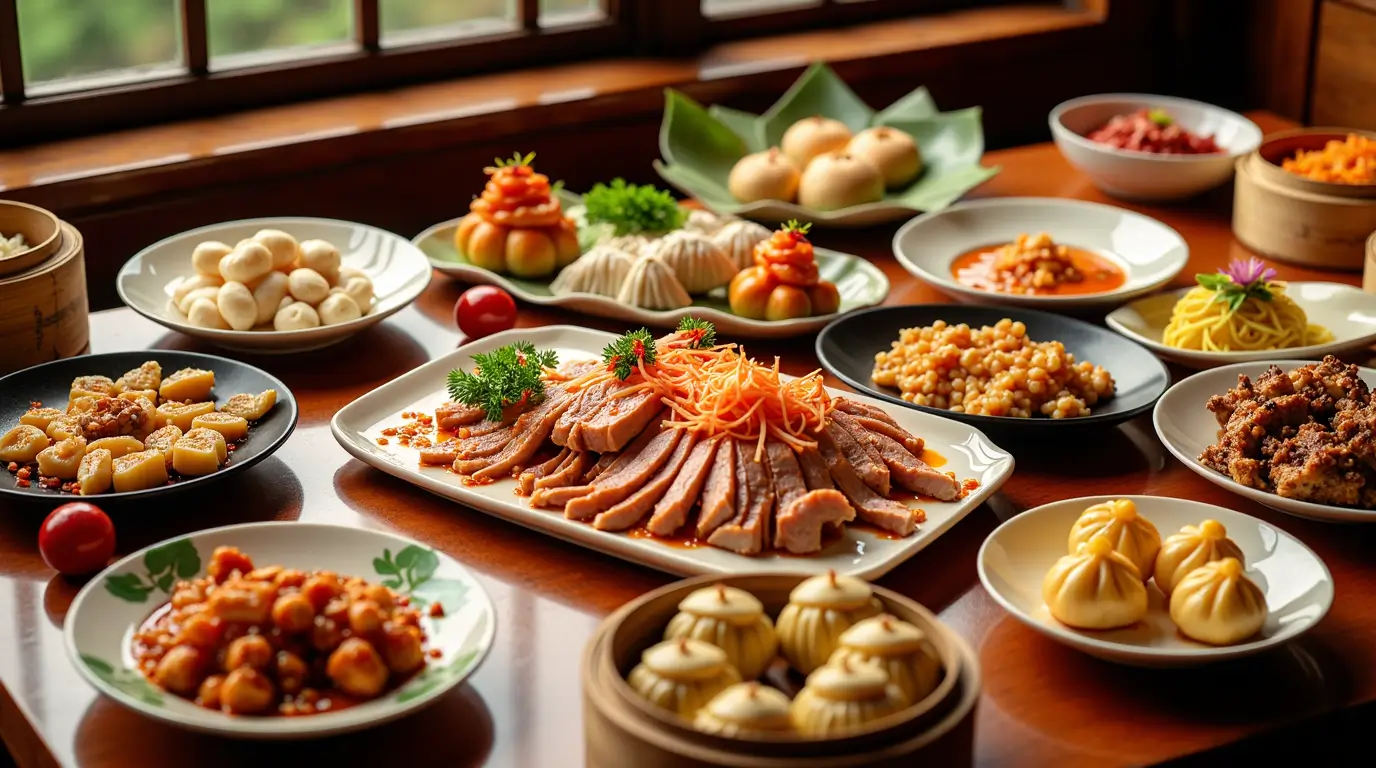Table of Contents
Introduction
China’s culinary heritage is one of the oldest, most diverse, and most influential in the world. With a recorded history stretching back thousands of years, Chinese cuisine has evolved into a multifaceted tapestry of flavors, techniques, and traditions. From the imperial banquets of dynastic courts to the humblest street food stalls, Chinese cooking is rooted in both sophisticated skill and a deep respect for fresh, high-quality ingredients. Thanks to China’s vast geographic expanse, regional cuisines can differ in striking ways, reflecting local climate conditions, historical influences, religious practices, and cultural preferences.
The global popularity of Chinese cuisine cannot be overstated. Today, you can find Chinese restaurants in nearly every corner of the world, each interpreting dishes in its own way but still drawing on key elements from the source. As a result, Chinese cuisine often serves as an introduction to Asia’s broader culinary sphere for many diners, due to its adaptability and the sheer variety of tastes it offers—from delicately seasoned fare to dishes showcasing bold, fiery flavors.
This article will take a comprehensive look at Chinese cuisine in all its richness. We will explore its historical roots and development, examine the major cultural and geographical forces that have shaped it, and identify the key ingredients and signature dishes that define its identity. We will also delve into the regional differences that have given rise to distinct local specialties, provide practical tips for cooking at home, and highlight the table customs that play an integral role in Chinese dining experiences. Lastly, we will discuss how Chinese cuisine continues to evolve and incorporate modern trends, while preserving its timeless core characteristics. By the end, you’ll have a deeper appreciation for why Chinese cooking is celebrated across the globe and how you might embark on your own exploration of China’s gastronomic treasures.
Culinary Context and History
Ancient Roots and Early Developments
Chinese culinary history can be traced back at least 3,000 to 4,000 years, with archaeological findings suggesting that ancient Chinese societies cultivated grains like millet and later rice, domesticated livestock such as pigs and chickens, and developed preservation methods (including fermentation) that remain cornerstones of the cuisine today. Early Chinese gastronomy was heavily influenced by philosophical ideas from Confucianism and Taoism, which encouraged balance, harmony, and respect for nature’s bounty.
For example, Confucian ideals stressed the importance of communal eating and conviviality at the dining table. The concepts of yin and yang also extended to food preparation, reminding cooks to balance hot and cold ingredients, and to consider texture, flavor, color, and aroma to create perfectly harmonious dishes. Such culinary philosophy remains relevant in modern Chinese cuisine, where attention to balance continues to guide the creation of meals—whether in fine-dining restaurants or family homes.
Another key development in China’s early culinary context was the emphasis on food as medicine, spurred by the influence of Traditional Chinese Medicine (TCM). Certain ingredients were believed to have “warming” or “cooling” effects on the body, and Chinese cooks have long sought to incorporate these principles into everyday meals. This practical approach to nutrition and flavor is one reason Chinese cuisine places great importance on variety and the use of fresh, seasonal ingredients.
The Impact of Major Dynasties and Migrations
China’s long dynastic history also played a vital role in shaping its culinary identity. The Han Dynasty (206 BCE – 220 CE), one of the earliest imperial reigns, was instrumental in consolidating agricultural practices and introducing advanced cooking techniques, such as stir-frying. The famed Silk Road, which began to flourish during this era, allowed the exchange of exotic ingredients between China, Central Asia, the Middle East, and beyond. Spices like cinnamon, cardamom, and pepper traveled along these routes, expanding the repertoire of Chinese cuisine.
During the Tang (618–907 CE) and Song (960–1279 CE) Dynasties, Chinese cuisine became increasingly refined, with imperial courts hosting grand banquets that showcased the elaborate, artful nature of Chinese cooking. Literary works from these periods document the lavish dishes served in royal palaces, including elaborate feasts prepared to honor foreign envoys and visiting dignitaries. Confections, pastries, and delicate soups highlighted culinary artistry; meanwhile, the growth of urban areas spurred the development of taverns, tea houses, and specialty food stalls catering to diverse tastes.
Mongol influence during the Yuan Dynasty (1271–1368 CE) brought nomadic elements to Chinese cuisine, particularly in northern regions where wheat-based staples like noodles and buns gained prominence. The subsequent Ming (1368–1644) and Qing (1644–1912) Dynasties continued to polish and codify regional cooking styles, sometimes referred to in more modern times as the “eight great cuisines of China” (Shandong, Sichuan, Jiangsu, Zhejiang, Fujian, Hunan, Anhui, and Cantonese/Guangdong), though this categorization continues to expand.
Foreign Exchanges and Modern History
It was not only through Central Asia and the Silk Road that China’s gastronomy was shaped. Contacts with Southeast Asia, Japan, and, later, Europe through maritime routes introduced new ingredients such as chili peppers, peanuts, and sweet potatoes—all crops that originated in the Americas but were brought to China by Spanish and Portuguese traders in the late 16th and early 17th centuries. The chili pepper, in particular, revolutionized cuisines in Sichuan, Hunan, and Guizhou provinces, where it swiftly became essential to local flavor profiles.
During the 19th and early 20th centuries, large-scale Chinese migrations to Southeast Asia, North America, and other parts of the world led to the global spread of Chinese cuisine Settlers opened small eateries serving familiar dishes adapted to local ingredients and tastes. Over time, distinctive “fusion” styles—such as American-Chinese or Hakka-Indian Chinese—emerged. These adaptations remain a testament to the adaptability and creativity at the heart of Chinese cooking.
In the People’s Republic era (post-1949), certain waves of policy changes impacted agricultural production, food supply, and culinary practices. However, the core traditions remained resilient. As China opened up to the global market in the late 20th century, its cuisine regained a central place on the international stage. Today, both traditional methods and cutting-edge culinary experimentation coexist, ensuring that Chinese gastronomy remains a vibrant, evolving mosaic.
Regional Differences: North, South, East, and West
One of the most fascinating aspects of Chinese cuisine lies in its regional diversity. Many food enthusiasts know the rough distinctions, such as “spicy Sichuan food” or “light Cantonese cuisine,” yet the real picture is even broader. Each region boasts unique culinary styles shaped by climate, indigenous produce, cultural traditions, and local tastes.
- Northern China: Wheat is a mainstay, leading to a focus on noodles, dumplings (jiaozi), steamed buns (mantou), and hearty dishes that protect against cold winters. Shandong cuisine, characterized by braised techniques and strong flavors like vinegar and scallions, exemplifies much of northern cooking’s robust nature. Beijing, located in the northeast, is known for dishes like Peking Duck and savory pancakes, reflecting imperial influences and a taste for richly roasted meats.
- Southern China: Often referred to as the “land of fish and rice,” southern China’s subtropical climate is conducive to abundant rice fields, water-based produce, and year-round fresh vegetables. Cantonese (Guangdong) cuisine is famous for its delicate seasonings, emphasis on freshness, and wide range of cooking techniques—steaming, stir-frying, roasting, etc. Fresh seafood, light sauces, and subtle flavors define much of this region, although more intense tastes can also be found, especially in places like Guangxi or Hunan.
- Eastern China: Coastal eastern provinces like Zhejiang, Fujian, and Jiangsu benefit from bountiful seafood, fertile farmland, and moderate climates. They feature sweet and savory flavor profiles, sometimes using a touch of sugar, rice wine, and vinegar. Shanghai, for instance, is renowned for dishes that balance sweetness and acidity, while Fujian’s cuisine leans toward delicate broths and umami flavors drawn from seafood and dried ingredients.
- Western China: Spanning Sichuan, Chongqing, Xinjiang, and other inland regions, western Chinese cuisines can be strikingly varied. Sichuan and Chongqing are known for mouth-numbing chili peppercorn heat, while Xinjiang, with its significant Muslim population, highlights lamb, cumin, and grilled kebabs. In southwestern areas like Yunnan and Guizhou, you’ll encounter sour-spicy flavor combinations, wild mushrooms, and an abundance of herbs shaped by mountainous terrain and diverse ethnic communities.
These variations epitomize the breadth of Chinese cooking: a single national cuisine with countless localized expressions. Understanding this diversity is key to appreciating how China’s geographical and cultural landscapes have shaped the nation’s gastronomy over millennia.
Key Ingredients and Local Products
One of the defining features of Chinese cuisine is its reliance on fresh, seasonal produce and the creative use of simple staple ingredients. Whether you’re sampling northern noodle soups or southern stir-fried vegetables, certain fundamental components unify the cuisine, while regional specialties add nuance and variety.
Emblematic Foods
- Rice and Wheat
Rice serves as a staple in most southern and eastern provinces, featured in dishes such as fried rice, congee (rice porridge), and as the basis for countless meals where it is served plain alongside stir-fries and soups. Wheat is predominant in the north, yielding dumplings, noodles, buns, and pancakes. In both cases, the grains form the backbone of daily sustenance. - Soy Products
Soybeans are integral to Chinese cooking. Soy sauce, in both light and dark varieties, is a near-ubiquitous seasoning. Tofu, fermented bean pastes, and other soybean derivatives add depth to many dishes. Doubanjiang (fermented broad bean and chili paste) is particularly important in Sichuan cooking. - Vegetables and Fruits
Chinese cuisine heavily features leafy greens like bok choy, choy sum, and mustard greens, along with root vegetables such as daikon radish and lotus root. Seasonal vegetables—like fresh bamboo shoots in spring—are prized for their sweetness and tender texture. Fruits like lychees, longans, and peaches also appear in both sweet and savory preparations. - Herbs, Aromatics, and Spices
Garlic, ginger, and spring onions (scallions) constitute the “holy trinity” of Chinese aromatics. Chili peppers, Sichuan peppercorns, star anise, and cinnamon (cassia bark) are frequently used spices, especially in regional recipes. Fresh coriander (cilantro) is sometimes added as a garnish or mixed into salads. - Meats and Seafood
Pork is traditionally the most widely consumed meat in China, though chicken, duck, beef, and lamb also feature prominently. Seafood, especially in coastal regions, includes fish, shrimp, crab, and shellfish, often prepared via steaming or stir-frying to highlight natural flavors. In some areas, more exotic ingredients such as frogs, eels, or insects are appreciated as local delicacies. - Fermented Products
Beyond soy sauce and bean pastes, Chinese cuisine employs a range of fermented items: black vinegar from Zhenjiang, Shaoxing rice wine (for both cooking and drinking), salted black beans, and pickled vegetables like mustard greens. These fermented elements not only add complexity but also historically served as a means of preservation.
Tips on Purchasing Ingredients
If you live outside China, you can still find many authentic Chinese ingredients in specialty Asian grocery stores or larger supermarkets that carry international products. Here are a few pointers:
- Soy Sauce: Choose reputable brands that do not rely on chemical processes for fermentation. Light soy sauce is saltier and used primarily as a seasoning, while dark soy sauce is thicker, with a richer color and a slightly sweeter taste.
- Dried Mushrooms and Aromatics: Shiitake mushrooms, dried lily buds, and wood ear mushrooms are pantry staples. Rehydrated, they add an earthy dimension to soups and stir-fries.
- Fresh and Seasonal Produce: Whenever possible, opt for farmers’ markets to find fresh greens like bok choy and gai lan. Many vegetables found in Chinese recipes (like water spinach or Chinese chives) can be substituted with similar greens if they are unavailable in your area.
- Herbs and Spices: Sichuan peppercorn is crucial for authentic Sichuan dishes. Check labels to ensure you are buying “prickly ash” or Sichuan peppercorn, not just black or white pepper.
- Oils: Peanut oil and vegetable oil are common for stir-frying due to their high smoke points. Sesame oil is generally used for finishing a dish, adding a fragrant aroma.
By sourcing high-quality ingredients, you can capture the essence of Chinese cooking and recreate some of your favorite dishes at home with remarkable authenticity.
Must-Try Traditional Dishes
Chinese cuisine boasts an astounding array of dishes, each with a story, technique, or cultural significance attached. While it would be impossible to list them all in a single article, below are some emblematic favorites, along with regional variations and simplified recipes for home cooks eager to begin their culinary adventures.
1. Peking Duck (Beijing/Known Nationally)
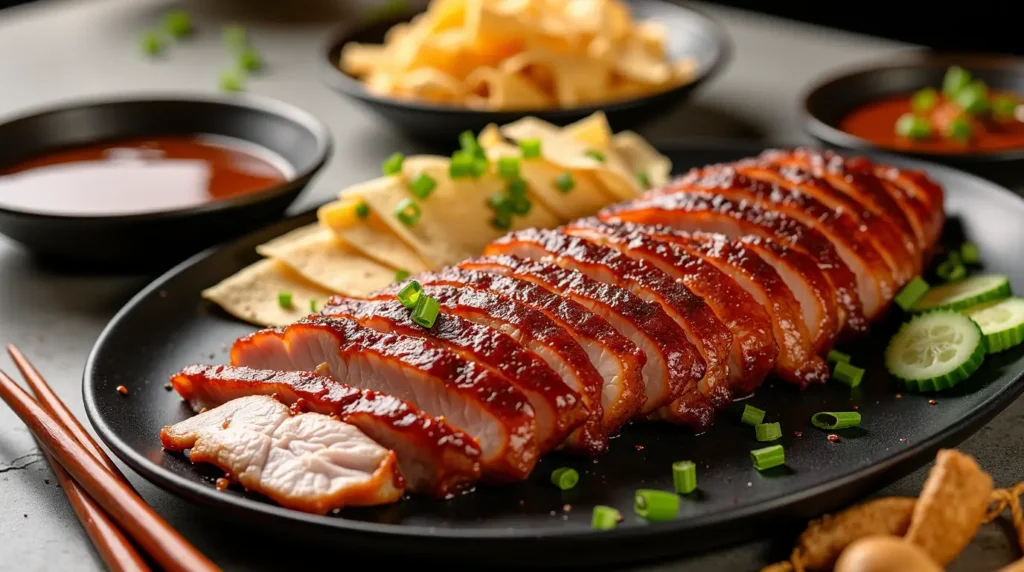
History and Characteristics:
Peking Duck dates back to the imperial era, where it was served to emperors and their courtiers as a prized dish. The hallmark of Peking Duck is the crispy, lacquered skin produced by air-drying the duck after coating it with a sweet solution, then roasting it in an oven or over an open flame. In restaurants, it is often sliced tableside, and diners wrap the succulent meat and crunchy skin in thin pancakes with hoisin sauce, spring onions, and cucumbers.
Regional Variation:
While Beijing remains the ultimate destination for authentic Peking Duck, variations can be found across China. In some coastal areas, duck may be marinated with regional spices or stuffed with aromatics before roasting. Nevertheless, the emphasis on crispy skin and tender meat remains consistent.
2. Dim Sum (Cantonese/Gunagdong Region)
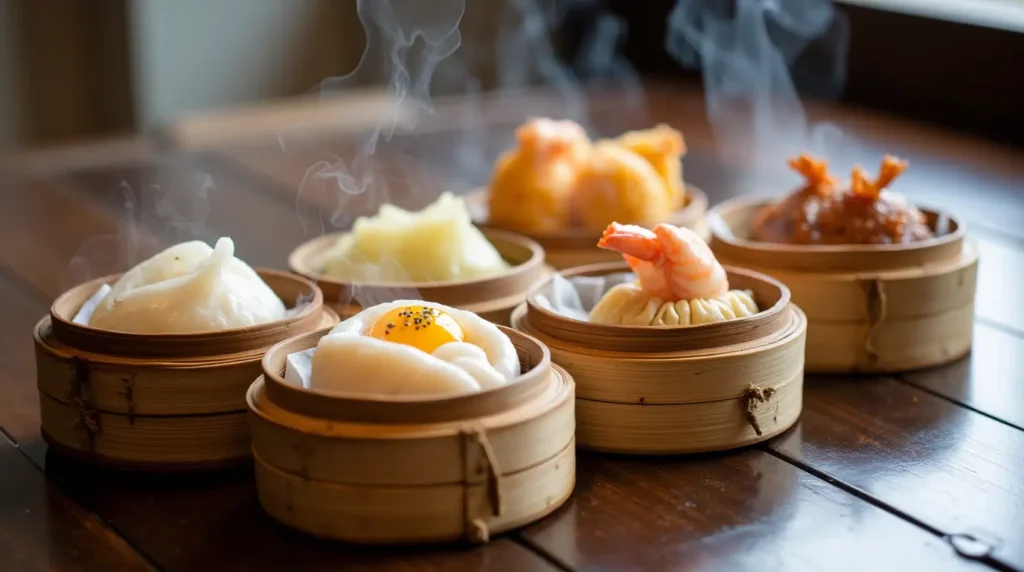
History and Characteristics:
Dim sum originated as a light meal for travelers along the ancient Silk Road who stopped at teahouses for refreshments. Over time, these bite-sized dishes—served in bamboo steamers—became a Cantonese tradition known as yum cha (literally, “drink tea”). Dim sum includes dumplings, buns, rice noodle rolls, and even sweet pastries. Key dishes range from har gow (shrimp dumplings) and siu mai (pork and shrimp dumplings) to char siu bao (barbecued pork buns) and egg tarts.
Regional Variation:
While most closely associated with Guangdong province and Hong Kong, dim sum culture has spread throughout southern China and beyond. Other provinces have their own dumpling traditions—like Shanghai’s xiao long bao (soup dumplings)—though these are typically considered separate from Cantonese dim sum.
3. Mapo Tofu (Sichuan)
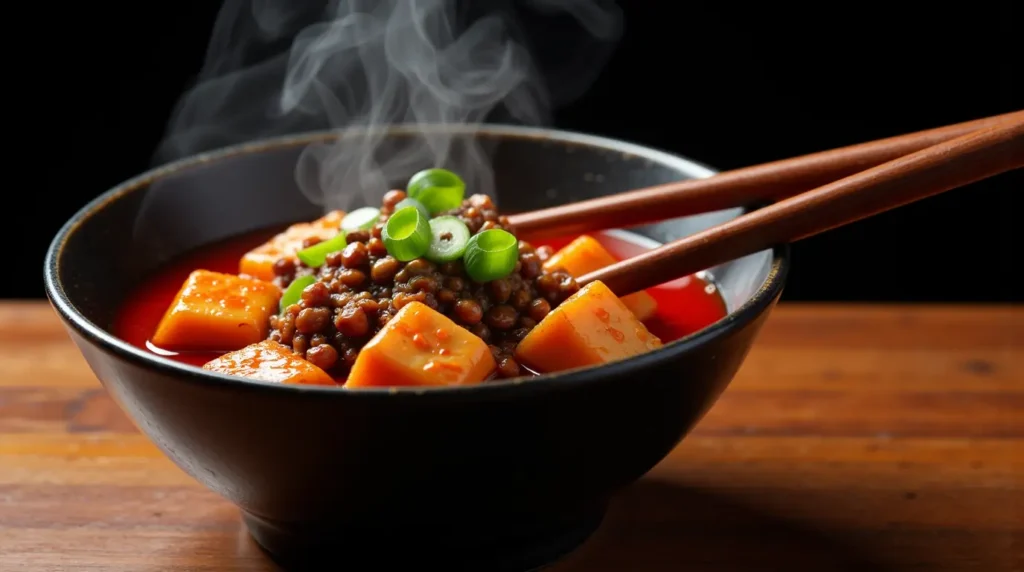
History and Characteristics:
Mapo Tofu originated in Chengdu, Sichuan province, and was named after a legendary pockmarked (ma) old woman (po) who ran a small restaurant selling this fiery dish. Soft tofu cubes are braised in a bright-red chili bean sauce spiked with Sichuan peppercorns and ground meat (usually pork or beef). The result is a tongue-tingling, aromatic stew that marries heat, numbing peppercorn, and creamy tofu.
4. Kung Pao Chicken (Sichuan/Popular Nationally)
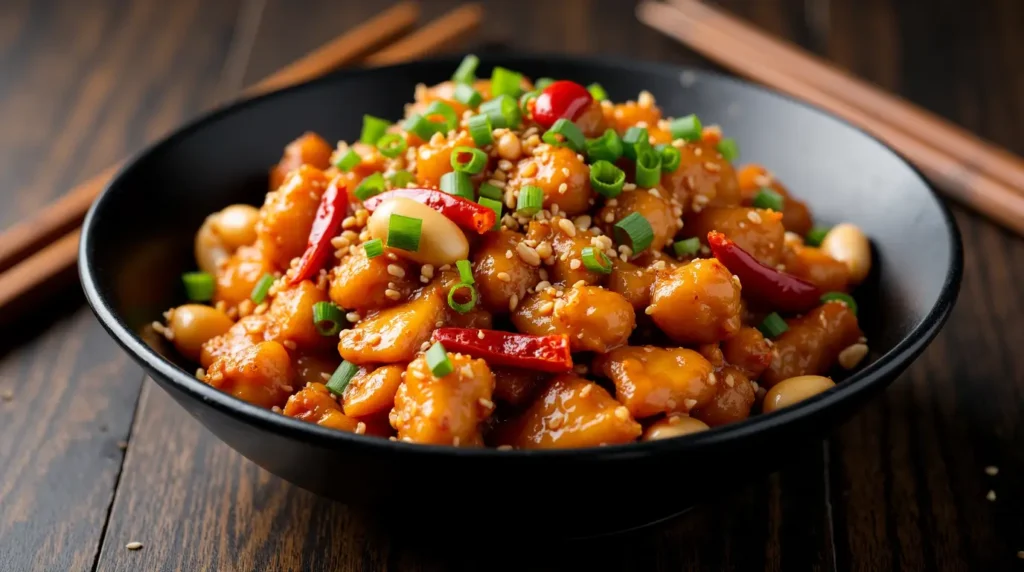
History and Characteristics:
Kung Pao Chicken (gong bao ji ding) is named after a Qing Dynasty governor, Ding Baozhen, who allegedly loved this stir-fry of diced chicken, peanuts, and dried chili peppers. Characteristically sweet, sour, and spicy, the dish exemplifies Sichuan cuisine’s flair for balancing flavors and textures.
5. Xiaolongbao (Shanghai and Jiangsu)
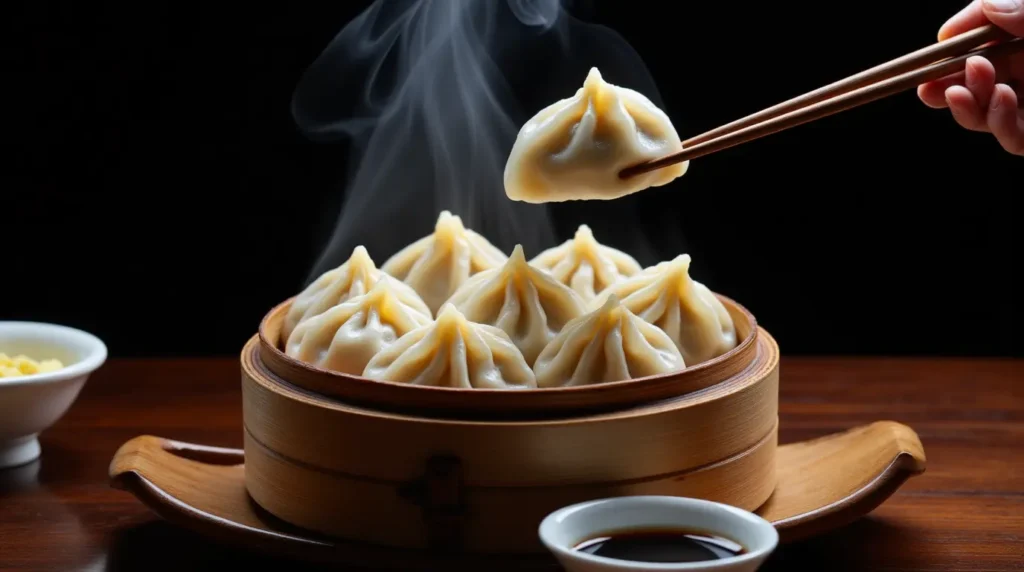
History and Characteristics:
Xiaolongbao are delicately pleated soup dumplings, typically filled with pork or a combination of pork and minced crab, along with jellied broth that liquefies when steamed. Originating around the Shanghai and Jiangsu region, these tender dumplings burst with savory soup when bitten into.
Regional Variation:
In different parts of eastern China, similar dumplings may employ different fillings—some with seafood, some vegetarian with mushrooms and glass noodles. The hallmark remains the thin, translucent dough and the savory broth hidden within.
Other Iconic Dishes Worth Mentioning
- Hot Pot (Huoguo): A communal style of dining popular throughout China, though especially beloved in Sichuan and Chongqing.
- Chow Mein and Lo Mein: Stir-fried noodles featuring vegetables, meat, or seafood, originating in northern China but now widespread globally.
- Sweet and Sour Pork: A Cantonese-origin dish that has become a global Chinese restaurant staple.
- Yangzhou Fried Rice: A classic from Jiangsu province, incorporating shrimp, diced vegetables, and scrambled eggs.
- Hunan Spicy Stews: For those who crave a chili-laden experience beyond Sichuan peppercorn’s numbing heat.
With such a wide variety of dishes, Chinese cuisine offers something for every palate. By starting with a few must-try classics, you’ll quickly appreciate the depth and complexity that makes Chinese food so diverse and exciting.
Defining Characteristics of Chinese Cuisine
Chinese cuisine’s defining characteristics stem from its commitment to balance, diverse flavor profiles, and adept use of cooking techniques. While many people associate Chinese food primarily with bold or spicy tastes, the reality is far more nuanced.
- Flavor Balance: Chinese cooks speak of five fundamental flavors—sweet, sour, salty, bitter, and spicy (sometimes expanding to savory/umami). Achieving a harmonious balance among these elements is central to many recipes.
- Seasoning and Sauces: Soy sauce, oyster sauce, rice vinegar, Shaoxing wine, and chili oil help create a broad spectrum of tastes. The combination of soy sauce and sugar, or vinegar and ginger, is particularly common.
- Texture Emphasis: Chinese dishes often aim to combine contrasting textures—crisp vegetables with tender meats, velvety soups with crunchy garnishes, etc.
- Rapid Cooking Methods: The invention of the wok revolutionized Chinese cooking. Stir-frying at high heat allows for quick preparation that locks in nutrients and flavors. Steaming and braising are also widespread techniques.
- Regional Spiciness: While Sichuan, Hunan, and Guizhou cuisine revel in fiery chilies and mouth-numbing peppercorns, Cantonese and certain eastern cuisines prefer milder seasonings, focusing on fresh and delicate flavors.
For food enthusiasts seeking new tastes, Chinese cooking offers endless possibilities. Whether your preference leans toward fresh, mildly seasoned seafood or bold, chili-laden stews, there is a dish to satisfy every culinary curiosity.
Tips and Highlights to Encourage People to Try Chinese Cuisine
- Cultural Immersion:
Eating Chinese food is more than satisfying hunger; it’s a gateway into a culture that values communal meals, ritual, and shared enjoyment. Dining with friends or family is integral to experiencing how Chinese cuisine brings people together. - Incredible Variety:
The sheer diversity of dishes—from street snacks to haute cuisine—ensures you’ll never run out of new things to try. If you’re an adventurous eater, consider exploring lesser-known specialties like Yunnanese mushroom hot pot, Beijing zhajiangmian (noodles with fermented bean sauce), or Xinjiang lamb kebabs. - Accessible Ingredients:
Thanks to globalization, many supermarkets worldwide now stock basic Chinese sauces and ingredients, making it simpler than ever to cook Chinese recipes at home. Start with simple stir-fries or dumplings and gradually branch out. - Healthful Aspects:
Chinese dishes often prioritize fresh vegetables and lean proteins, prepared quickly to retain nutrients. The use of tofu, soy-based products, and complex carbohydrates from rice or noodles can form the basis of balanced meals. - Engaging Food Culture:
Chinese food culture is steeped in traditions such as dim sum gatherings, family banquets on festive occasions, and nightly street food markets. Engaging with these rituals—whether at a restaurant or cooking at home—builds an appreciation for the stories behind each dish.
If you have the chance, try a traditional Chinese banquet or a hot pot experience. Each shared meal paints a vivid picture of how cuisine, community, and cultural heritage interconnect in China.
Modern Trends and Culinary Fusions
Evolving Through Contact with Other Gastronomies
In major Chinese cities like Shanghai, Beijing, Guangzhou, and Shenzhen, the influx of foreign businesses, international students, and expatriates has accelerated culinary exchange. You can find high-end restaurants featuring Franco-Chinese fusion or Japanese-Chinese ramen shops that incorporate Chinese spices into broth-based dishes. Many celebrated chefs experiment with Western plating techniques or incorporate global superfoods (like quinoa) into Chinese-inspired recipes. Similarly, Chinese cuisines abroad have also evolved in contact with local tastes: for instance, in the U.S., sweet-and-sour adaptations and the beloved General Tso’s Chicken highlight an American-Chinese style that differs from many dishes found in China itself.
New Consumption Trends
- Vegetarianism and Plant-Based Diets: While vegetarian cuisine has a long history in Buddhist temple cuisine, a contemporary wave of health-conscious eating has given rise to more plant-based restaurants and recipes. Traditional soy products like tofu and tempeh, along with a variety of mushrooms, form the backbone of these reimagined dishes.
- Organic and Farm-to-Table: Concerns over food safety and quality have spurred interest in organic produce and traceable supply chains within China. High-end restaurants boast partnerships with local farms, emphasizing sustainability.
- Rise of Online Delivery and Meal Kits: In tech-savvy urban centers, ordering grocery boxes or prepared meal kits online is now common. People can easily receive fresh ingredients and step-by-step instructions to cook popular Chinese dishes at home.
Conclusion and Call to Action
China’s cuisine is a living archive of history, culture, and innovation—every dish tells a story of geography, tradition, and personal creativity. From the earliest practices of agriculture and preservation to the refined banquets of imperial courts and the global popularity of modern-day Chinese restaurants, this gastronomic heritage continues to evolve and inspire. Across China’s vast territory, regional styles flourish, offering a kaleidoscope of tastes—from the bold heat of Sichuan peppercorns to the delicate elegance of Cantonese steaming.
By exploring Chinese cuisine, you’re partaking in a communal experience that values harmony, generosity, and the joy of sharing good food. If you’ve never tried Peking Duck, dim sum, or a steamy bowl of Mapo Tofu, there’s no better time than now to embark on this culinary journey. Experiment in your home kitchen by sourcing fresh, seasonal ingredients and exploring the balance of flavors that lies at the heart of Chinese cooking. If you’re already a devotee, challenge yourself to delve deeper, sample regional specialties you’ve never tasted before, and perhaps even learn about the cultural customs that shape each dish.
Have you already cooked any of these dishes at home, or do you have a favorite Chinese restaurant story to share? We’d love to hear about your experiences—your successes, challenges, and discoveries. Whether you’re a seasoned expert or a curious newcomer, your stories enrich the ongoing dialogue about Chinese food culture. Feel free to leave questions, recipe tips, or personal anecdotes in the comments.
In a future article, we could explore the complexities of Chinese tea culture—another realm of craftsmanship, history, and ritual that complements the country’s gastronomic traditions. Until then, may your kitchen be filled with fragrant aromas and your table graced by memorable meals that draw from the incredible tapestry of China’s culinary heritage.

